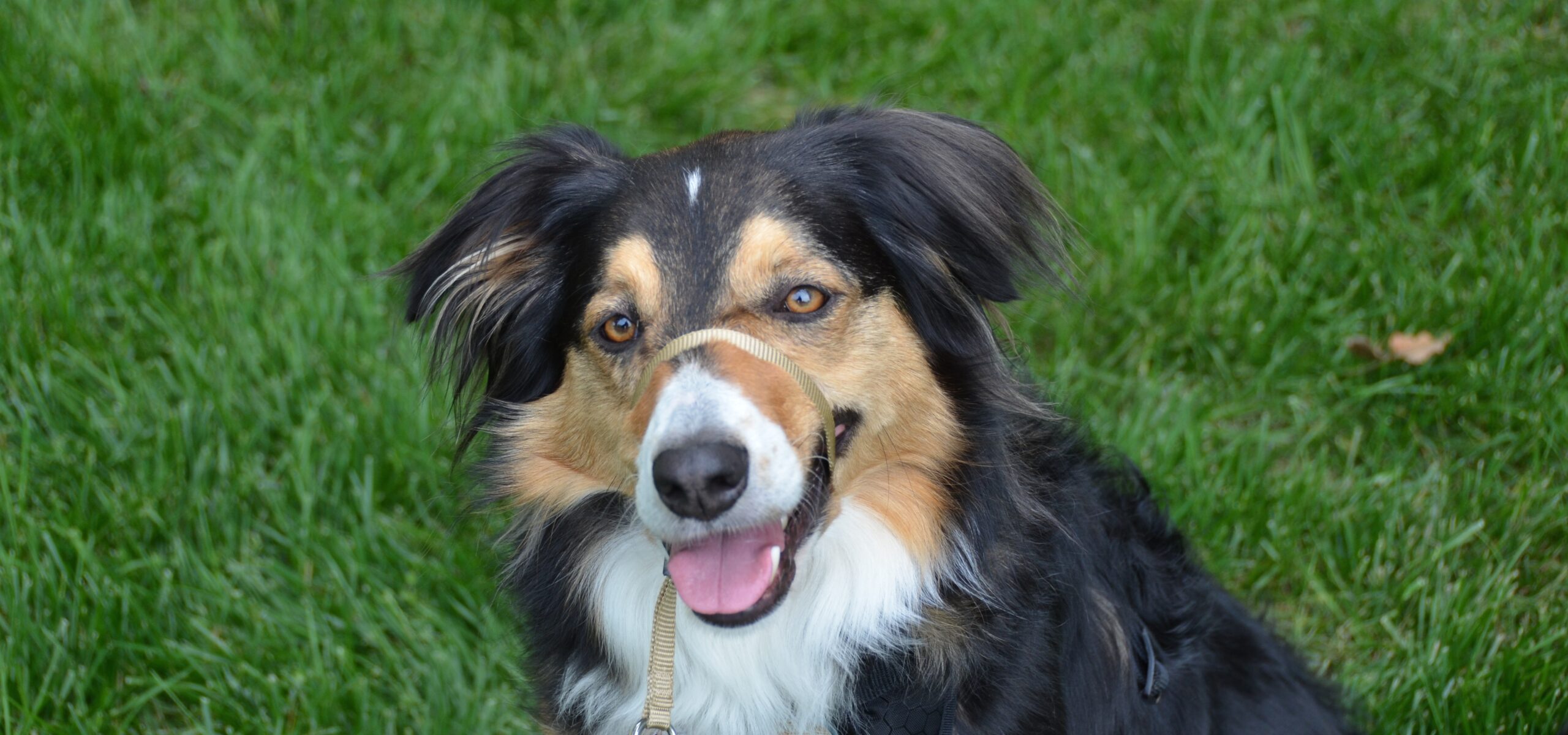
Collars and Harnesses and Head Halters, Oh My!
Yesterday I had a conversation with a client with a lovely 8 month shepherd mix named Addie. She was adopted from a shelter in upstate New York at around 4 months old and her new family contacted us for training shortly thereafter. In addition to typical puppy training (housetraining, manners, learning to spend time quietly alone, etc.) we worked to help Addie’s new Dad resolve some fear issues Addie was suffering from when out for a walk on the busy streets of New York City. The loud noises of trucks and buses and the endless stream of people and other dogs were things Addie had not been exposed to at all during the first four months of her life. In addition, Addie seemed temperamentally inclined to be cautious and concerned.
After a few weeks, Addie’s Dad had made great progress with her in regards to housetraining and basic manners, and walking gradually became easier and more enjoyable. This was due to a number of factors including using rewards (her regular meals and special treats) on the street to reinforce calm behavior, practicing manners such as sit, down, come and impulse control indoors and out, consistent off leash play sessions with other dogs (to build confidence and improve sociability), and using appropriate tools. In Addie’s case this was a front clip harness that helped to gently discourage pulling.
Addie is now 8 months old and her Dad has found himself saying “She never did this before” on an increasingly regular basis. This is something that tends to develop with just about anyone raising a dog. As dogs mature, their behavior changes. They react to the environment and the people and things they encounter differently as they move from puppyhood, to adolescence and adulthood.
The most recent cause for concern in regards to a change in Addie’s behavior is that she started lunging at cars passing by (specifically only when on a quiet street and one car goes by). While the core of training should always remain the same; to teach our dogs using a motivational approach, so as to develop a dog who wants to do what we want them to do, at times the specific tools we use may vary. Just as the value of rewards such as special food treats, toys, verbal and physical praise, and being allowed off leash to play with another dog, will vary from dog to dog, from day to day and depending on the environment (for example, a lower value food reward may be useful in a familiar indoor environment, but may not be as effective when working in a new, outdoor environment with loads of distractions) so to may the value or usefulness of other training tools vary.
In Addie’s case, I suggested her Dad consider using a head halter for the time being instead of the front clip body harness. Head halters for dogs are similar to those used for horses as a way to gently, but effectively control the dog or horse by leading them by their head. A dog head halter has a strap that goes around the dog’s neck (behind the dog’s ears) and another strap that goes around their nose. The nose strap sits far enough back on the dog’s snout that it does not act as a muzzle. That is, the dog can fully open their mouth. If the dog begins to pull the halter turns their head slightly down and towards you.
Head halters can be a very effective and humane tool to help curb pulling on leash. While Addie wasn’t pulling consistently, I felt it would be a good option (even if used just temporarily until progress was made) to curb Addie’s burgeoning impulse to lunge at cars, which is clearly a very dangerous occupation for any dog, but especially one that is walked on the busy streets of New York City.
I made it clear that the head halter was not a substitute for continued management and training, simply a sort of ‘power steering’ that would help prevent this seemingly new behavior from becoming a habit. As when introducing a neck collar to a young pup, a dog may present signs of frustration when wearing the a head halter the first few times. So, we worked with Addie indoors first. Using rewards such as high value food and loads of verbal praise, familiarity and comfort with the head halter can be achieved. While we are not fans of using choke chains for training, a nylon slip or choke collar can be a useful safety tool as a back-up to the head halter or a regular buckle collar. By attaching the leash to both you achieve a two level safety system when walking your dog.
Addie’s Dad is getting to work to help her overcome her issue with cars and he knows that as she continues to develop he will hear himself say “She never did this before” again. But, he also knows that he has a wonderful foundation of knowledge in regards to effectively managing potential behavior issues right as they crop up so as to prevent them from developing into long term habits. This is at the core of helping a wonderful dog like Addie continue to learn how to be happy, safe and well mannered throughout her life.
Dog training from the experts
Educate your dog with Andrea Arden and her team.
New York | Los Angeles | Connecticut
Share
- Group Classes
- Private Lessons
- Virtual Training
- Puppy Play Groups
- Puppy Training
- Articles & Advice

